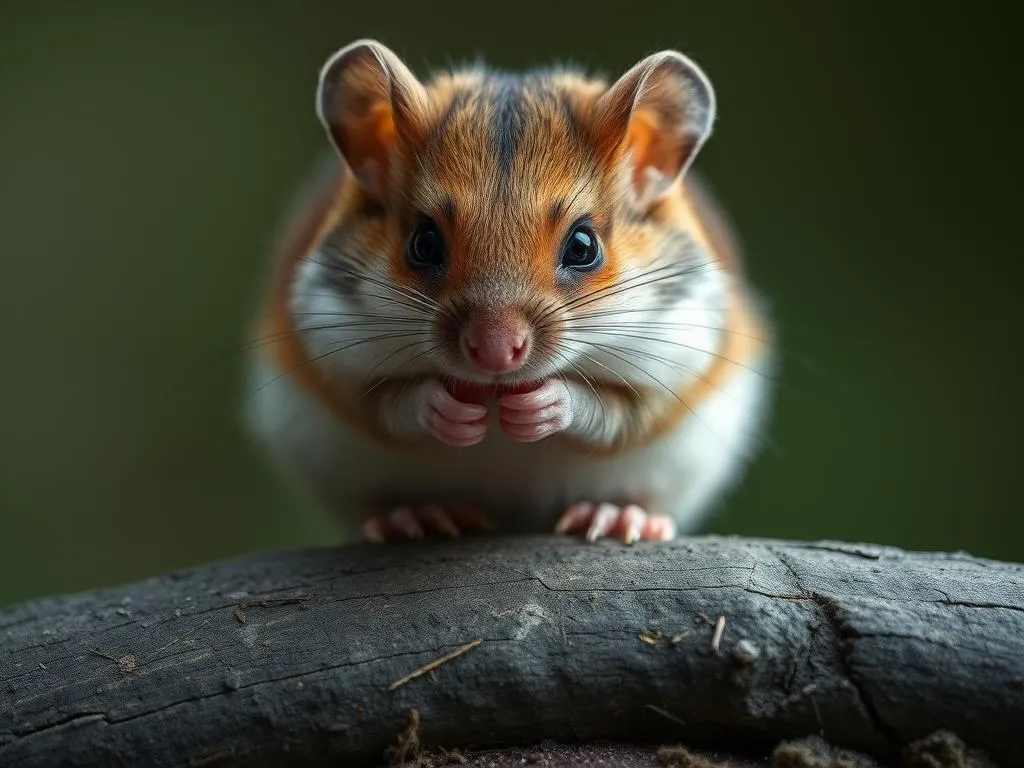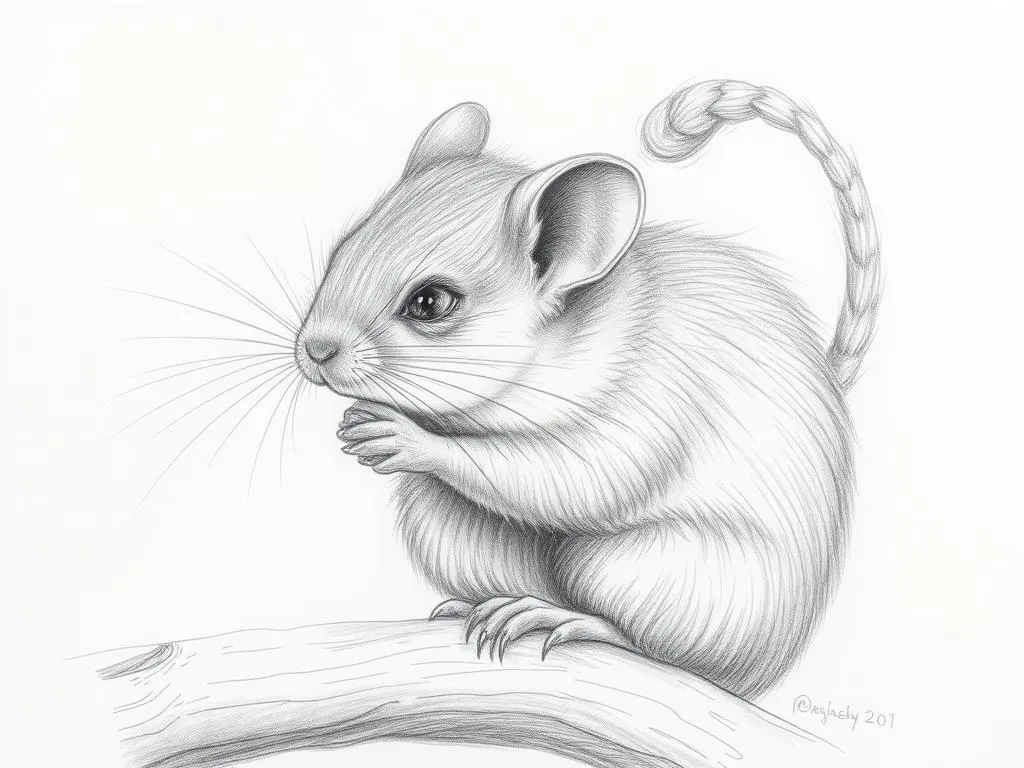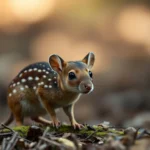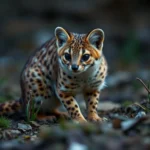The Enigmatic Dormouse: Symbolism and Spiritual Significance

Disclaimer: Some images on this website are AI-generated artworks and may not accurately represent real animals.
The dormouse, a small and often overlooked creature, carries with it rich layers of symbolism and meaning. From its serene nature to its unique life cycle, the dormouse serves as a powerful symbol of gentleness, renewal, and connection to the natural world. In this comprehensive exploration, we will delve into the characteristics and behaviors of the dormouse, its symbolism and spiritual meaning, its role in dreams, modern interpretations, and key takeaways that can enrich our understanding of this enchanting mammal.
Understanding the Dormouse
Physical Characteristics
The dormouse is a small rodent belonging to the family Gliridae. Characterized by its round body, large eyes, and fluffy tail, it presents an endearing appearance that captures the imagination of many. Below is a table detailing some of the dormouse’s key physical characteristics:
| Feature | Description |
|---|---|
| Size | Typically 5 to 7 inches long |
| Weight | Ranges from 1 to 3 ounces |
| Fur Color | Soft, dense fur; varies from light brown to gray |
| Eyes | Large, dark, and expressive |
| Tail | Long and bushy, aiding in balance |
Habitat and Diet
Dormice are predominantly found in Europe, Asia, and parts of North Africa. They typically inhabit woodlands, hedgerows, and scrubland, favoring areas rich in vegetation. These creatures are nocturnal, emerging at night to forage for food. Their diet consists mainly of fruits, nuts, seeds, and flowers, demonstrating their role as important seed dispersers within their ecosystems. This connection to nature emphasizes the dormouse’s significance in maintaining ecological balance.
Life Cycle
The life cycle of a dormouse is fascinating, marked by distinct stages. Dormice generally breed once a year, with mating occurring in late spring. After a gestation period of about three weeks, the female gives birth to a litter of 3 to 7 young. The babies are born blind and hairless but grow rapidly. As they mature, dormice develop the ability to hibernate, a process that begins around autumn when food becomes scarce. This cycle of birth, growth, and hibernation underscores themes of renewal and continuity.

Symbolism & Spiritual Meaning
Gentleness and Rest
One of the most profound aspects of dormouse symbolism is its association with gentleness and rest. Dormice are known for their calm demeanor, often seen snuggling in nests or curled up in the foliage. This serene nature encourages us to embrace tranquility in our lives. In today’s fast-paced world, the dormouse serves as a reminder of the importance of taking time to rest, recharge, and reflect.
Hibernation as Renewal
Hibernation is a significant part of the dormouse’s life, representing renewal and transformation. During the long winter months, dormice enter a state of deep sleep, conserving energy and allowing their bodies to rejuvenate. This natural cycle mirrors our own experiences of rest and renewal, urging us to allow ourselves periods of reflection and recovery. Just as the dormouse emerges vibrant and full of life in spring, we too can emerge from our own periods of dormancy refreshed and ready to tackle new challenges.
Connection to Nature
The dormouse symbolizes a deep connection to nature, embodying harmony within the natural world. Its presence in woodlands and gardens serves as a reminder of the delicate balance of ecosystems. This symbolism encourages us to cultivate our relationship with the environment, appreciating the interconnectedness of all living beings. In recognizing the dormouse’s role in nature, we are inspired to live more sustainably and in harmony with our surroundings.
Dormouse in Dreams
Dream Interpretations
Dreams involving dormice can carry various meanings, often reflecting the dreamer’s subconscious thoughts and feelings. The appearance of a dormouse in dreams may symbolize a need for rest or a reminder to slow down in life. It can also represent vulnerability and the importance of nurturing oneself. Below is a table summarizing common interpretations of dormice in dreams:
| Dream Scenario | Interpretation |
|---|---|
| Seeing a dormouse | A call to embrace tranquility and gentleness |
| Dreaming of a hibernating dormouse | A sign of personal renewal and inner growth |
| Interacting with a dormouse | Encouragement to connect with nature and the self |
| A dormouse in distress | Warning about neglecting self-care or personal needs |
Symbol of Transition
In the realm of dreams, dormice can also signify transitions or changes in life. Much like their hibernation cycle, dreaming of dormice may indicate that you are in a period of flux, preparing for a new phase or transformation. This interpretation is particularly relevant for those facing significant life changes, suggesting that embracing the dormouse’s qualities can help navigate these transitions with grace and calm.
Messages from the Subconscious
Dreaming of a dormouse can serve as a powerful message from the subconscious. It may highlight feelings of vulnerability or a need for self-care that requires attention. The symbolism of the dormouse encourages dreamers to reflect on their emotional state, urging them to confront any underlying issues or desires for peace and solitude. This connection allows for deeper self-awareness and understanding, facilitating personal growth.
Modern Interpretations
Cultural References
The dormouse has made its mark in various cultural references, often symbolizing whimsy and curiosity. One prominent example is Lewis Carroll’s character, the Dormouse, in “Alice’s Adventures in Wonderland.” This character embodies the themes of sleep and dreams, reinforcing the idea of the dormouse as a symbol of tranquility and introspection. Additionally, the dormouse appears in various folk tales and artistic representations, highlighting its association with magic and the natural world.
Environmental Symbolism
In contemporary discussions on ecology, the dormouse has become an important symbol of environmental conservation. As a species sensitive to habitat loss and climate change, the dormouse represents the fragility of ecosystems. Its plight serves as a reminder of our responsibility to protect and preserve the natural world. By engaging with the symbolism of the dormouse, we can inspire action toward ecological sustainability and awareness.
Personal Growth and Reflection
In modern life, the dormouse invites individuals to engage in mindfulness and self-reflection. Its gentle nature encourages us to slow down, take stock, and appreciate the present moment. By embodying the qualities of the dormouse, individuals can cultivate a deeper understanding of themselves, fostering personal growth and emotional well-being. This reflection can lead to greater appreciation for the small joys in life, promoting a more harmonious existence.
Key Takeaways
- Embracing Rest: The dormouse encourages us to prioritize rest and self-care, reminding us that taking time to recharge is essential for overall well-being.
- Nature’s Wisdom: The dormouse symbolizes the importance of living in harmony with nature, urging us to appreciate and protect our environment.
- Symbol of Change: As a guide through life’s transitions, the dormouse inspires us to embrace change with grace and resilience.
Conclusion
In summary, the dormouse symbolism and its spiritual significance reveal profound insights into tranquility, renewal, and our connection to nature. This enigmatic creature encourages us to slow down, reflect on our lives, and appreciate the beauty of the world around us. As we ponder the qualities of the dormouse, we are invited to consider how these themes resonate with our own experiences, fostering a deeper understanding of ourselves and our place in the natural world. The dormouse, with its gentle spirit, serves as a timeless reminder of the importance of rest, renewal, and harmony within our lives.







